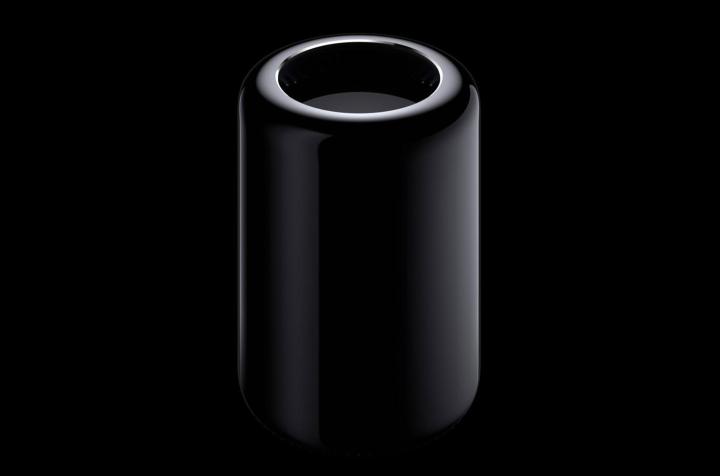
Apple announced a new Mac Pro at June 2013’s Worldwide Developers Conference, though details were scarce and the actual computer was not available for hands-on. At the time, all we were told was that it’d be available sometime in the fall, but it looks like we’re getting closer to the launch of the trashcan-shaped computer.
According to MacRumors, Apple began showing teasers in U.S. theaters over the weekend. If you happened to visit your local cinema to check out Jobs, chances are you saw the ad announcing the Pro availability this coming fall. With Apple’s rumored September 10 event approaching, where the company is said to be releasing the iPhone 5S (possibly available in gold) and 5C, as well as iOS 7, there’s a good possibility the Mac Pro will be officially unveiled as well.
The cylinder-shaped Mac Pro, which is an eighth of the volume of the previous 40-pound Mac Pro, is packed with some impressive components. The Mac Pro will ship with a next-gen 12-core Intel Xeon 256-bit processor, and it’s the first Mac to ever come standard with dual GPUs. It’s capable of 7 teraflops of performance, which, according to Apple’s Phil Schiller, is 10 times faster than any hard drive you could put in a Mac Pro before.
Ports are also numerous, with four USB 3.0 ports and six Thunderbolt 2 ports, all of which light up, making it easier to use the Mac Pro in the dark.
But don’t expect this new and improved Mac Pro to be cheap. Although official pricing has yet to be revealed, there’s been a lot of speculation. According to Gotta Be Mobile’s Josh Smith, the Mac Pro “could start around $3,500 with good options hitting $5,000.” That estimate comes from Instapaper creator Marco Arment, who analyzed Anandetech’s reported price list of the Xeon E5-2600 V2 CPUs that the new Mac Pro will use. Accord to Arment, the processors will cost anywhere from $1,944 for a 10-core 2.8GHz to $2,950 for a 12-core 2.7GHz.
Basically, these Mac Pros will cost a lot more than a few year’s worth of movie theater visits, even with the jumbo popcorn and drink.
Editors' Recommendations
- The Vision Pro is already in trouble. Here’s how Apple can turn the tide
- These 6 tweaks take MacBooks from great to nearly perfect
- The 5 best MacBooks for video editing in 2024
- MacBook Pro 16 vs. MacBook Pro 14: The important differences
- The best MacBook to buy in 2024


